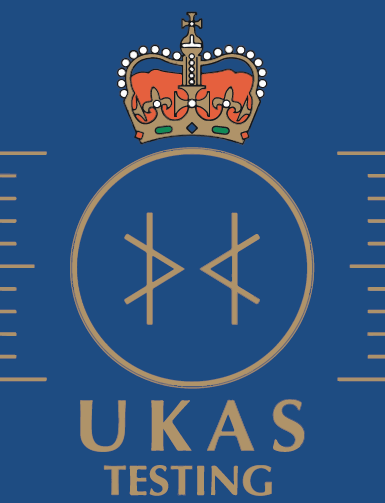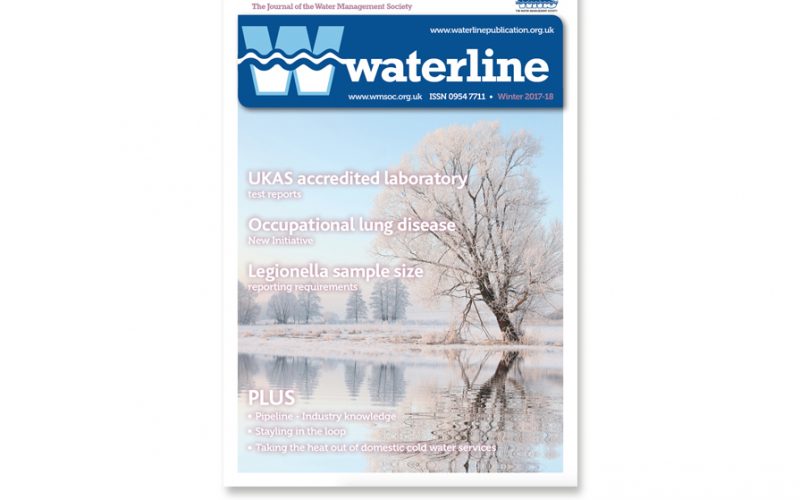As featured in waterline Winter 2017/18
UKAS ACCREDITED LABORATORY TEST REPORTS
Many users of laboratory services look for the UKAS symbol on a test report to give them confidence in the accuracy and impartiality of results. But what is the meaning behind this symbol and what should those commissioning accredited testing services expect to find on a UKAS accredited test report?
| UKAS accredited testing laboratories can display theaccreditation symbol on their test reports and most choose todo this. It is important to note that there must be at least oneaccredited test reported otherwise the symbol cannot be used.The symbol must also be accompanied by the laboratory’saccreditation number. |  |
|---|
The rules for using the UKAS accreditation symbols are defined by UK Government through the Department for Business, Energy and Industrial Strategy (BEIS). A key part of the policy states that;
It is BEIS policy that the National Accreditation Body – UKAS – and the organisations it accredits should be able to benefit from identifying visually their status using the logo or symbols that BEIS owns. In so doing however the organisations displaying them should not mislead anyone; devalue or degrade the logo/symbol; use them illegally; or be contrary to various recognised standards or guides.
Decoding test reports
A fundamental requirement of accreditation is that a laboratory is able to demonstrate that each method offered is fit for purpose. If a test method is UKAS accredited then the laboratory has demonstrated that the method meets the requirements of ISO/IEC17025: General requirements for the competence of testing and calibration laboratories. Of key importance is that the method operated by a laboratory is suitable and appropriate to meet its customer needs and this should always be established by both parties.
The ISO/IEC 17025 standard requires that the results of each test be reported accurately, clearly, unambiguously, and objectively. The results shall be reported, usually in a test report and shall include all the information requested by the customer and necessary for the interpretation of the test results.
The essential components of the test report are listed in the testing standard, and the accredited laboratory must include them unless there are valid reasons for not doing so. The following table focuses on the key requirements;
| Requirement | Purpose |
|---|---|
| Unique identification of the test report | For identification and traceability of the report |
| Name and address of the customer | Identifies the customer/contact for whom the work has been undertaken |
| Identification of the method used | The method reference, usually a code defined by the laboratory, identifies the documented method used for testing. The accredited methods and their codes will also be found on the UKAS schedule of accreditation for a laboratory, available at; www.ukas.com/search-accredited-organisations/ Where appropriate, the schedule may also include; a reference to the technical standard on which it is based; an outline of the techniques used in the methodology; reference to relevant regulations.If the method is accredited, then the UKAS symbol may be used with the laboratory’s accreditation number also displayed beneath. xxxx It must be clear to the reader of the report which methods are and are not accredited and which have been subcontracted. The reader should look for confirmation on the test report that the testis accredited, where this is expected. |
| Description and identification of the item tested | The laboratory will use the sample identification information provided by the customer and will include this in the test report. If not provided by the customer, the laboratory should endeavour to establish the type of sample (e.g. drinking water/process water) before analysis commences to ensure that the test method used is appropriate and covered by accreditation. |
| Condition of the item tested | Sample condition is established on receipt at the laboratory. Should sample integrity be in doubt due to damage, incorrect storage time/temperature, inappropriate container etc. then an appropriate comment must be included in the test report. This information is critical for the interpretation of the test result. |
| Date of receipt where this is critical to the validity and application of results and date of performance of the test | The date and time of sampling, receipt into the laboratory and commencement of testing is to be reported where this is appropriate e.g. microbiological testing. This information supports sample integrity and demonstrates that analysis has been commenced within recommended timescales. |
| Test results with, where appropriate, units of measurement | The test results must be clear and easy to assimilate. Units of measurement e.g. cfu in 100ml must be transparent to the reader. |
| Name, function and signature or equivalent identification of the person authorising the test report | The test report is to be authorised by an appropriate member of staff at the end of the checking process. |
| Where relevant, a statement to the effect that the results relate only to the items tested | This assists the reader with interpretation of results and makes clear that the result relates only to the sample tested submitted by the customer and subsequently analysed in the laboratory. |
Focus on detection and enumeration of Legionella – reporting under accreditation
In March 2017 UKAS issued communication to all accredited laboratories involved in Legionella testing of waters. The letter set out the expectations for the reporting of results in the volume of sample tested, examples as shown in the table below. The letter made specific reference to excluding the extrapolation of counts to give a result in a litre volume in cases where a smaller volume is received.
| Not detected in xxxx ml | xxxx cfu in volume analysed |
|---|
In March 2017 UKAS issued communication to all accredited laboratories involved in Legionella testing of waters. The letter set out the expectations for the reporting of results in the volume of sample tested, examples as shown in the table below. The letter made specific reference to excluding the extrapolation of counts to give a result in a litre volume in cases where a smaller volume is received.
About UKAS
The United Kingdom Accreditation Service (UKAS) is the National Accreditation Body (NAB) for the UK. Its role is to assess evaluating organisations to international standards. UKAS operates under a Memorandum of Understanding (MoU) with the Department of Business, Energy and Industrial Strategy (BEIS). UKAS accreditation involves assessment of certification, inspection, testing and calibration services. For further information about UKAS visit www.ukas.com.












